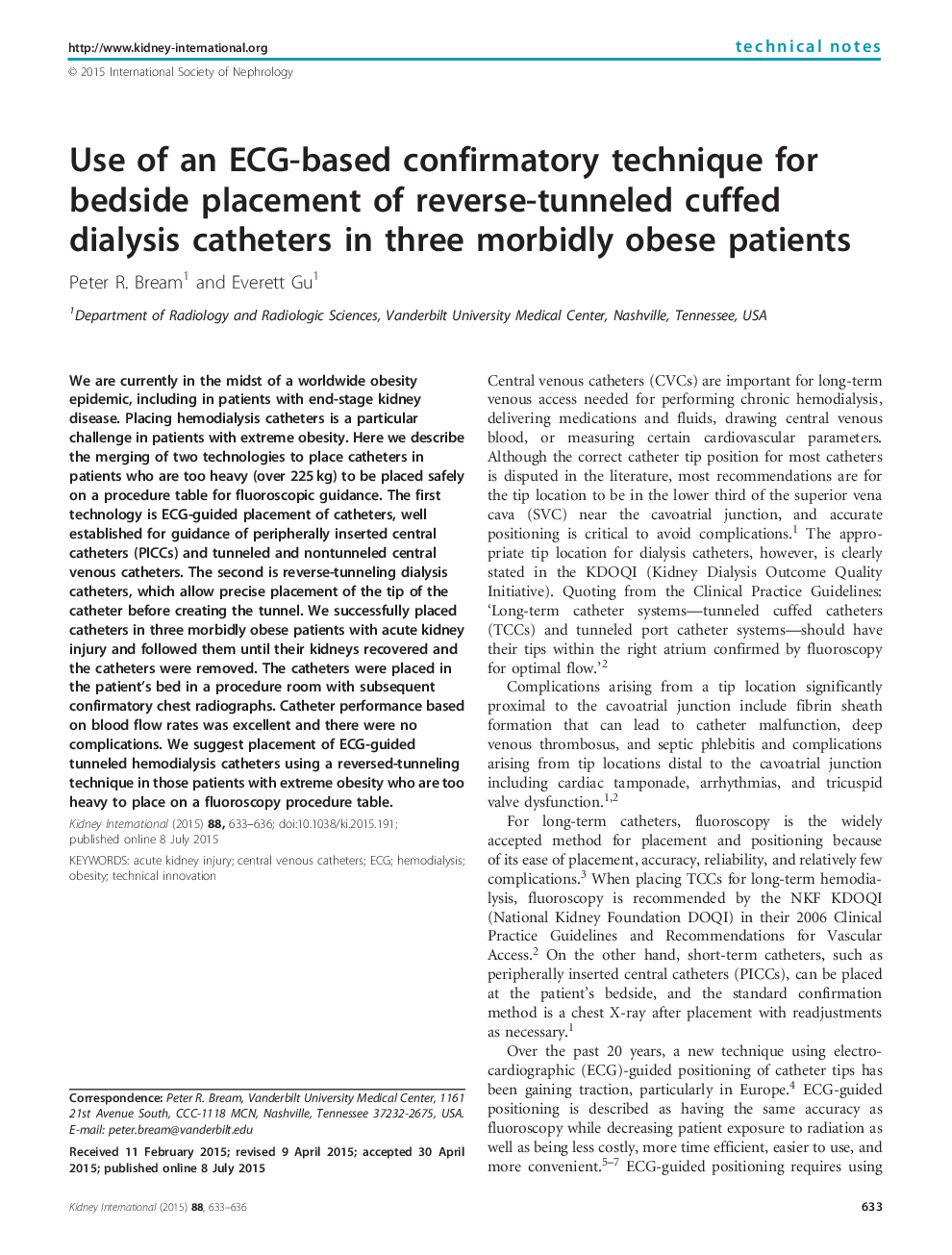| Article ID | Journal | Published Year | Pages | File Type |
|---|---|---|---|---|
| 6162063 | Kidney International | 2015 | 4 Pages |
Abstract
We are currently in the midst of a worldwide obesity epidemic, including in patients with end-stage kidney disease. Placing hemodialysis catheters is a particular challenge in patients with extreme obesity. Here we describe the merging of two technologies to place catheters in patients who are too heavy (over 225âkg) to be placed safely on a procedure table for fluoroscopic guidance. The first technology is ECG-guided placement of catheters, well established for guidance of peripherally inserted central catheters (PICCs) and tunneled and nontunneled central venous catheters. The second is reverse-tunneling dialysis catheters, which allow precise placement of the tip of the catheter before creating the tunnel. We successfully placed catheters in three morbidly obese patients with acute kidney injury and followed them until their kidneys recovered and the catheters were removed. The catheters were placed in the patient's bed in a procedure room with subsequent confirmatory chest radiographs. Catheter performance based on blood flow rates was excellent and there were no complications. We suggest placement of ECG-guided tunneled hemodialysis catheters using a reversed-tunneling technique in those patients with extreme obesity who are too heavy to place on a fluoroscopy procedure table.
Related Topics
Health Sciences
Medicine and Dentistry
Nephrology
Authors
Peter R. Bream, Everett Gu,
